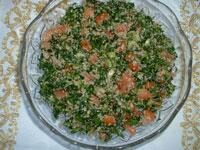DIA's Long-Awaited Islamic Gallery is Dedicated to Art from the Muslim World
It was worth the wait.
Finances forced the Detroit Institute of Arts from including its long-planned Gallery of Islamic Art when the museum reopened in 2007. That omission gets corrected Sunday, with the inauguration of a gorgeous suite of rooms devoted to the art of a Muslim world that once stretched from Spain to India.
On view are 168 artifacts comprising one of the best smaller Islamic art collections — outside of New York’s Metropolitan Museum or the Freer Collection in Washington, D.C. — entirely fitting, many would say, for a metro area with the nation’s largest Arab-American population.
Ron Amen, who attended the gallery’s black-tie gala opening last Saturday, says he was bowled over. “It’s an impressive, enlightening exhibit,” says Amen, who sits on the board of Dearborn’s Islamic Center of America. “And it’s a fabulous idea. The museum did an excellent job.” He laughs. “I certainly learned things.”
Gallery of Islamic Art exhibits range from artfully displayed sacred texts to fragments of ancient textiles, remarkably elegant even if frayed — from large Silk Road carpets to elegant household items from medieval Spain and Egypt. There’s even a little bling in the form of a jewelry box encrusted with rubies and diamonds that the last Amir of Bukhara, Uzbekistan, gave to the Russian Romanovs in 1909.
In keeping with the DIA’s new storytelling approach, the museum organized works by theme, with interactive elements to engage visitors — here a video on calligraphy, there an opportunity to design one’s own carpet. Also present is more of the museum’s hugely popular “Eye Spy” game that sets young children scurrying on artistic treasure hunts.
Though finances initially delayed the gallery’s opening — it cost $750,000 — Heather Ecker, the museum’s curator of Islamic art, thinks the wait no bad thing.
“Having taken our time with the gallery,” she says, “we have a better result.”
Over the intervening year and a half, she notes, the DIA was able to conduct scientific analysis on many artifacts, some of which had been in deep storage for decades, and undertake up-to-the-minute conservation treatments where needed.
“All textiles were remounted and reframed,” says Ecker, “and artifacts were cleaned and restored. The collection has really been taken care of.”
Among the gallery’s treasures, Ecker points to “an absolutely extraordinary Koran from Iran, surely an object made for a royal commission.” The text is inked on rare colored paper, flecked with real gold, available in the 14th century only to the Ming emperor in China. It was his gift to the Mongol conqueror of the Middle East, Timur (also known as Tamerlane).
Also remarkable is a 3-foot tall, gilded-copper Ottoman candlestick that Ecker says would have formed one half of a pair flanking a mihrab, or prayer niche, in a mosque. The huge bell-shaped ornament had languished so long in storage oblivion that it had all but been forgotten, and was one of the great surprises for Ecker as she explored the collection.
The candlestick came to the DIA in 1922, adding to a collection that had been launched in the 1890s.
“Islamic art has been a feature of the DIA since the beginning,” says Ecker. “But we’ve never had a gallery of this scale.”
Particularly in the Middle Ages, of course, the Islamic world was one of the most cosmopolitan regions on Earth. So while initially surprising, it makes sense that the gallery includes a few Jewish and Christian texts, as well as the Korans, in the small room devoted to “The Art of Sacred Writing.”
Ecker acknowledges there was some concern at first about mingling Islamic works with those from other traditions.
“But we wanted to show the diversity in the Islamic world,” she says, “which at one time was the most ethnically and religiously diverse places on the planet.”
For his part, the Islamic Center’s Amen says that caught him off guard.
“My initial reaction was ‘What’s the connection?'” he says. “But when you see the artifacts, you see the strong connection between Islam and Judaism. It took me back to some of my college history classes and how for centuries Muslims ruled Spain, with its strong cooperation between both the Muslim and Jewish communities.”
Michael H. Hodges
The Detroit News


